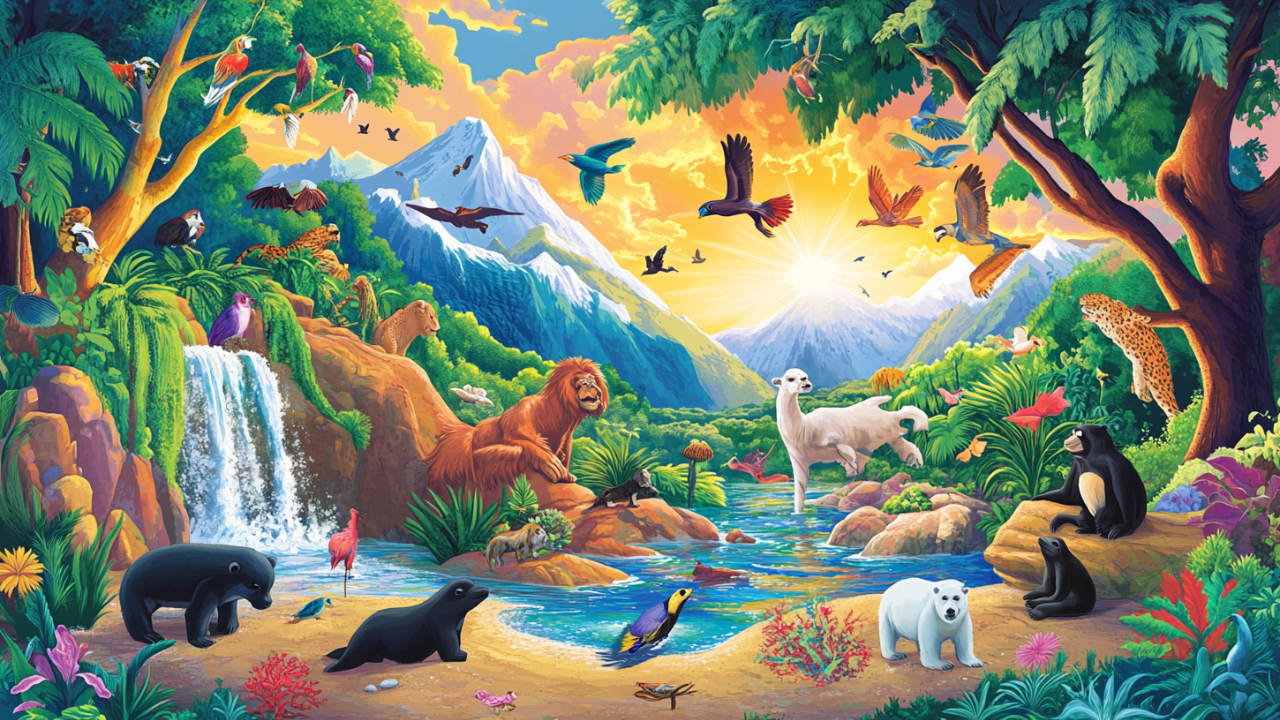Animals and Their Habitats: Exploring the Diversity of Life on Earth
Oct 06, 2024
Welcome, young explorers! Today, we are going on a wild adventure across our beautiful planet to discover how animals live in different habitats and how they adapt to survive. From the icy Arctic to the steamy rainforests, the world is full of incredible creatures that have found amazing ways to thrive in their homes. So, grab your explorer hats, and let’s dive into the world of animals and their habitats!
What is a Habitat?
A habitat is the natural environment where an animal lives. It provides everything the animal needs to survive: food, water, shelter, and a safe place to raise its young. Different types of habitats include forests, deserts, oceans, grasslands, and even the frozen tundra. Each habitat is unique and has special conditions, like temperature, rainfall, and sunlight, which influence what kind of animals can live there.
Forests: A World Full of Life
Forests are home to many animals, from tiny insects to large mammals. These habitats are full of trees, plants, and rivers, creating homes for animals like monkeys, birds, and tigers. In the rainforest, animals like sloths and toucans have adapted to live high up in the trees to find food and avoid predators. Animals in the forest must be good at climbing, swinging, and even hiding!
Deserts: Survival in the Sands
Deserts are dry and hot, with very little water. But even in these harsh conditions, animals have adapted to survive. Camels, for example, have humps that store fat, which they can use for energy when they can’t find food or water. Other animals, like lizards and snakes, are active at night when it’s cooler. The desert teaches us that animals can adapt in amazing ways to survive the heat and dryness!
Oceans: The Deep Blue World
Oceans cover most of the Earth, and they are home to some of the most incredible animals. From dolphins to sharks to tiny plankton, the ocean is full of life. Many sea creatures have special adaptations. For example, fish have gills that help them breathe underwater, and octopuses can change color to blend in with their surroundings. The deep sea is also home to strange animals like the anglerfish, which has a glowing lure to attract prey!
Arctic Tundra: Life in the Ice
The Arctic tundra is cold and covered in snow for most of the year, but some animals have adapted to survive in this chilly habitat. Polar bears, for example, have thick fur and a layer of fat to keep them warm. They can also swim long distances in icy water to find food. Other animals, like Arctic foxes, change the color of their fur to blend in with the snow during winter and with the tundra’s plants in the summer.
Grasslands: The Great Plains
Grasslands are large open areas with lots of grasses but very few trees. This habitat is perfect for animals like zebras, lions, and elephants. Animals in the grasslands often need to be fast to escape predators or hunt for food. Cheetahs, for example, are the fastest animals on land, and their speed helps them catch prey. Many grassland animals also live in groups to stay safe from predators.
Animal Adaptations: Nature’s Superpowers
Animals are great at adapting to their environments, and these adaptations help them survive and thrive. Some animals blend in with their surroundings to hide from predators (like a chameleon that changes color!), while others have developed special body parts. For example, a giraffe’s long neck helps it reach leaves high up in trees, and a kangaroo’s powerful legs help it hop quickly across the open plains.
Why is it Important to Protect Habitats?
All these animals depend on their habitats to live. But sometimes, habitats are destroyed because of human activities, like cutting down forests or polluting the oceans. When habitats are lost, animals have a harder time finding food, shelter, and raising their young. That’s why it’s important to protect our planet and make sure animals have safe places to live.
So, whether you’re learning about penguins in the icy Antarctic or elephants in the warm savanna, remember that every animal plays a special role in its habitat. Let’s work together to protect these amazing creatures and the homes they live in!


